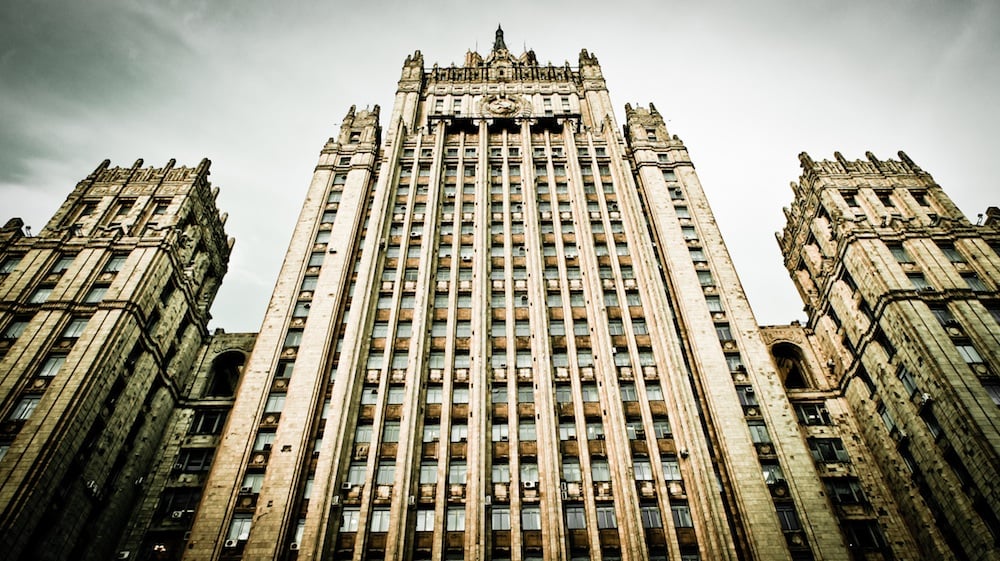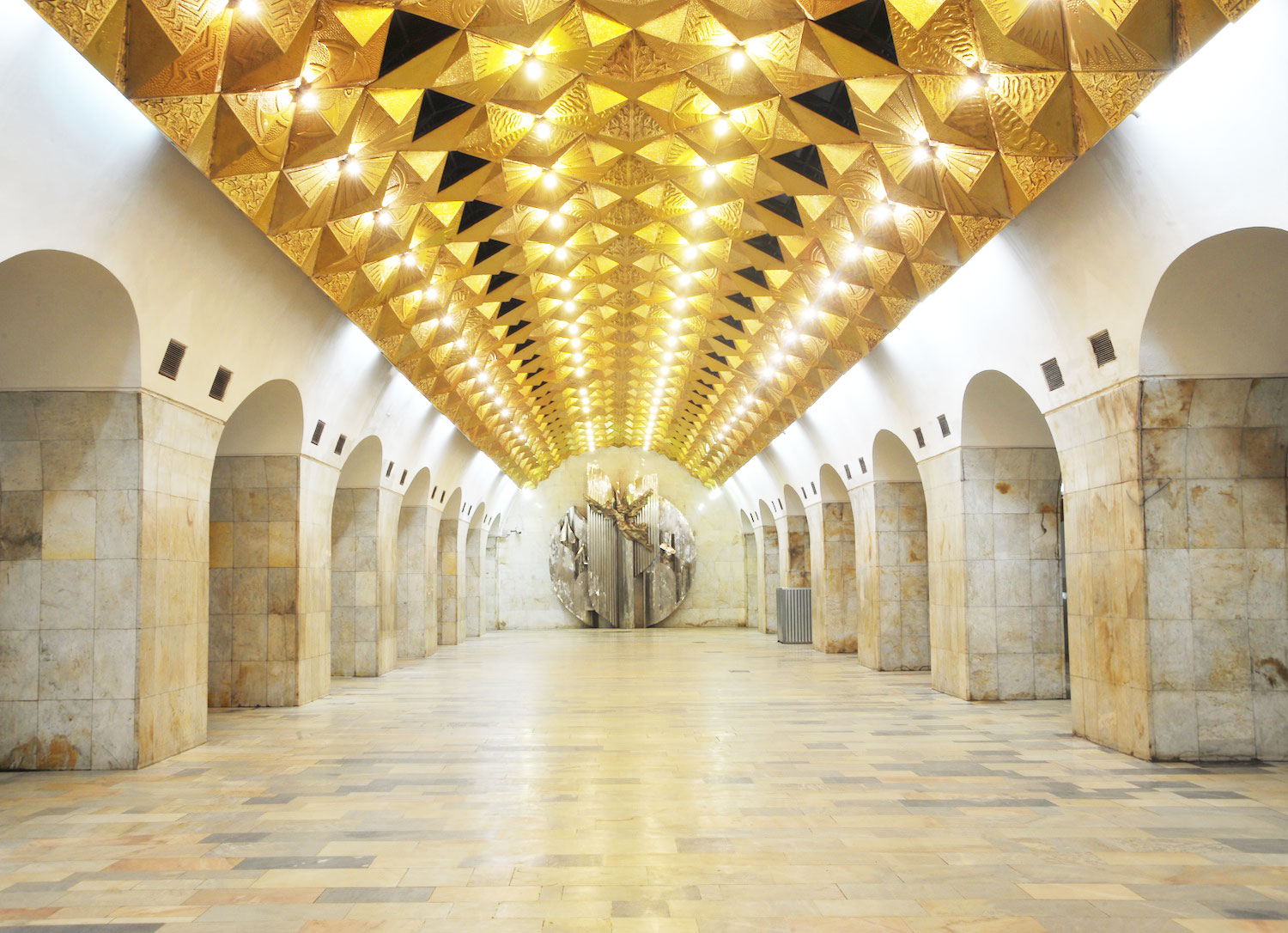Aisles of plenty: reading Moscow’s history through its shopping mall design
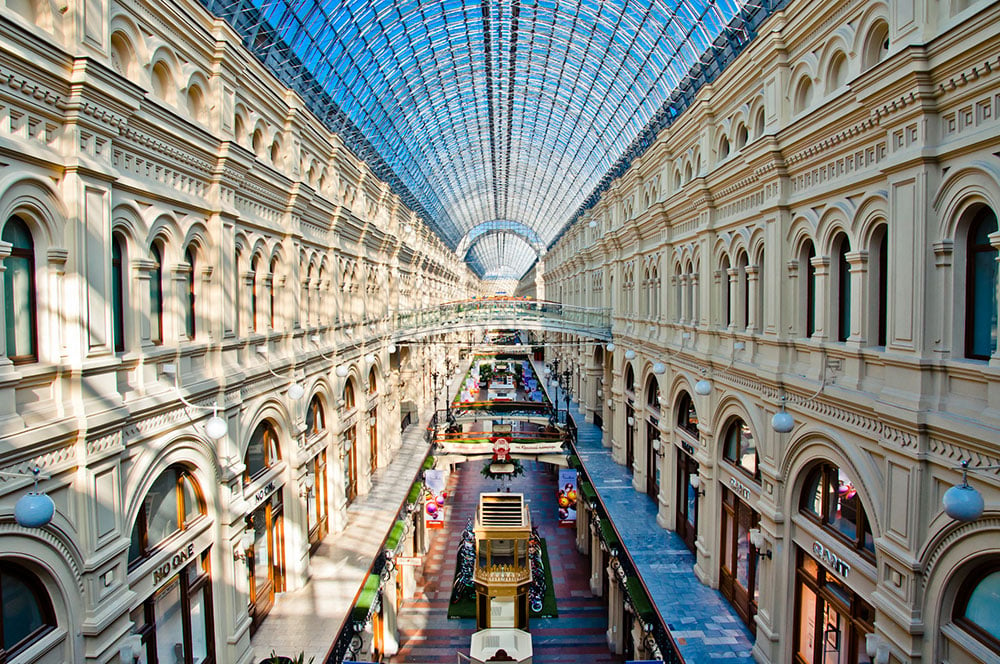
From the fin-de-siècle opulence of GUM to the Ballardian horror of Aviapark, Owen Hatherley considers the architecture of Moscow's shopping malls and the city's fluctuating relationship with capitalism
Practically forgotten in the midst of the rouble’s collapse is the fact that near the end of last year, the largest shopping mall in Europe, Aviapark, opened in Moscow. The fact that the Russian currency and with it, the purchasing power of Russians, faced near-decimation only a month after it opened means that Aviapark might be the retail equivalent of the “skyscraper index” that pegs economic crashes to the completion of each “world’s tallest” building. The very fact that such a temple to capitalism opened at all is a useful reminder that for all the allegedly “neo-Soviet” rhetoric of its leadership, there’s nothing anti-capitalist about today’s Russia. Reading back from it, though, to other shopping centres, department stores and arcades built in the Russian capital, you can find that for a time, even Bolshevism had a role for retail.
The history of the Russian shopping mall begins with one truly remarkable piece of architecture, and it’s one shopping mall that everyone knows about in Moscow, the one that most foreign visitors to the city will have at least window-shopped in: GUM on Red Square. When built, it would have not answered to this Soviet acronym — Gosudarstvennyi Universalny Magazin, or, roughly, State Department Store — but to the less grand “Upper Trading Rows”. As a work of architecture, it is a strange, and very Victorian mix of the retrograde — that neo-Russian style exterior, one part Harrods, one part Kremlin, by the architect Alexander Pomerantsev — and the modern, with the flamboyantly high-tech engineering of the interior, courtesy of the engineer Vladimir Shukhov. It shared its stylistic schizophrenia with the great railway stations, a facade of heavy masonry on the outside, supported by a structure of exceptionally light and weightless iron and glass on the inside. Except here, in his original interpretation of the Parisian shopping arcade, Shukhov accidentally hit on the typical shopping mall typology several decades early — long two-level glazed corridors with shops on each side and walkways connecting them. Only escalators, air-conditioning and muzak were missing in the original design from what would come to be the norm for almost all shopping malls worldwide.

This monument to turn-of-the-century capitalism is privately owned in 2015, but it had an 80-year interlude as the flagship of the State Department Stores, a Union-wide network. Due to its placement just opposite the main site of pilgrimage and/or tourism to the Kremlin and Lenin’s Mausoleum, Red Square’s GUM had to be a showcase of abundance, with properly stocked shelves and no queues. The other parts of the Soviet retail network were not so fortunate — like in most of eastern Europe, the elite shopped when they could in hard-currency stores. However, even given the two-tier shopping system and the shortages that became acute in the 1980s, there were several attempts in the Soviet era to give architecturally dramatic form to the act of buying stuff. The shopping mall as we now know it, with its atria, flagships and bustling spaces, is the “invention” of a socialist, the Viennese emigre Victor Gruen, who saw his multifunctional malls in suburban America as equivalents to the “social condensers” of the Constructivists. So it should be no surprise that the Constructivists themselves did more than dabble in mall design.
There are two especially striking Moscow examples, Mosselprom and Mostorg. The former, in the centre of Moscow, is an early 1920s building by the architect David Kogan, built out of the shell of a collapsed Tsarist-era block of flats. It was the hub of the Moscow Rural Co-Operative, who had to contend at the time with the revival of private business in Lenin’s New Economic Policy (NEP). The incipiently socialist co-ops had to prove that they had better produce and fairer prices than that offered by the “NEPmen”, and Mosselprom hired for the purpose Alexander Rodchenko and Varvara Stepanova as graphic designers, and for the slogans and jingles, Vladimir Mayakovsky. These artworks and slogans were clear and sharp, far from the dreamy curlicues that decorated the shopfronts in the Upper Trading Rows, hawking chocolate and tobacco in a droll, no-bullshit style. Although the building has been flats and offices since the 1930s, the Constructivist graphics have been restored, avant-garde artworks that are not, now, selling anything other than themselves.
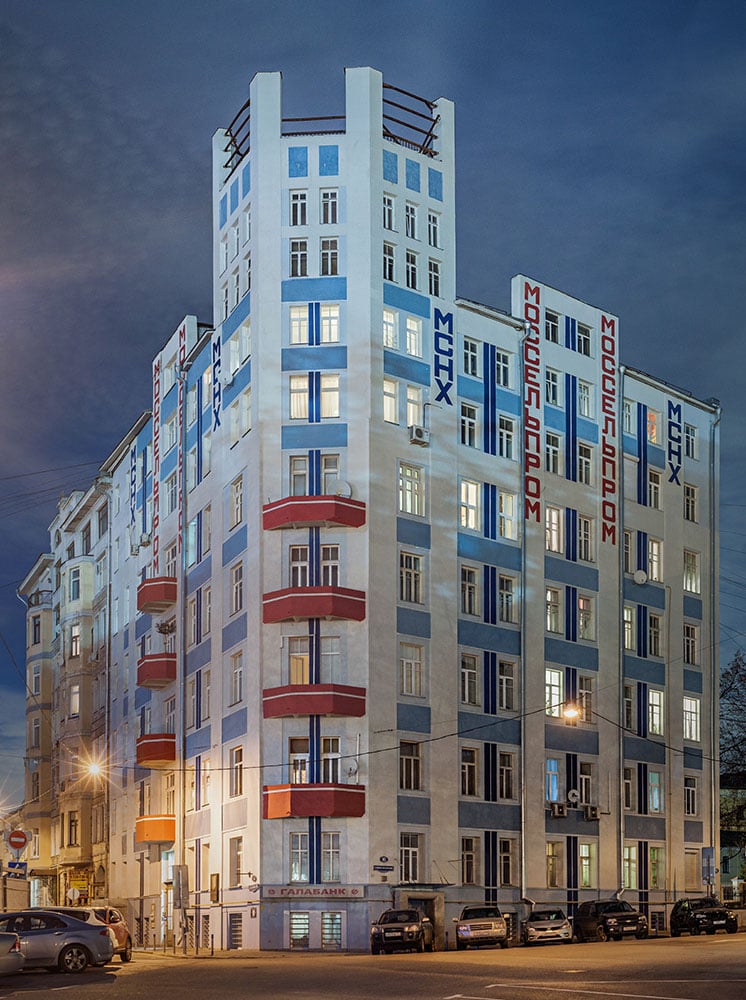
The Mostorg building was a little more ambitious, a completely glass-fronted store in the Krasnaya Presnaya district. Designed by the Vesnin brothers in 1928, it is perhaps the only one of the several glass projects proposed by the Constructivists to have actually been built. Here, the intention is polemical — the “dishonest” Tsarist style where metal and glass are encased by fake, non-load-bearing stone is reversed, and the pure glass clarity of GUM’s interior here forms the facade. As a gesture, it is designed to imply an openness to working class customers, without the intimidating opulence of the likes of GUM. As at Mosselprom, the original typography has been restored, though the glass facade is blocked off by an advert for its current owners, Benetton.
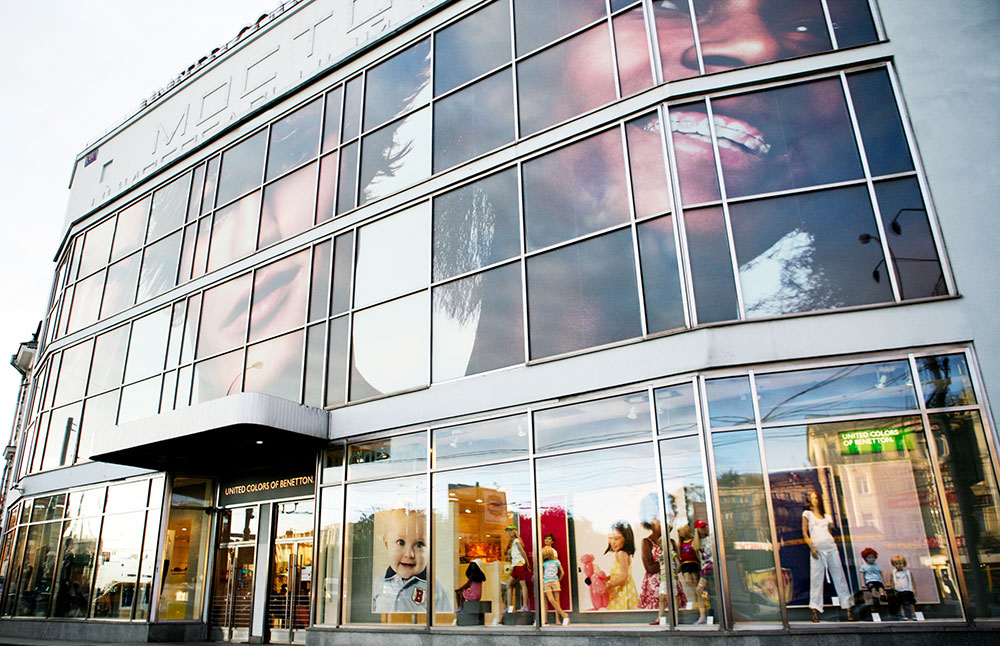
This sort of experimentation was rejected in the 1930s, not so much because the shift towards autocracy and the plummeting of living standards that were the immediate results of the Five Year Plans meant that architecture for consumption was now out of fashion, but quite the opposite. Stalin’s mid-1930s declaration that “life is getting better” was reflected in a wave of richly decorative buildings, and in retail, this meant that — for a price — goods that were rejected by austere Constructivists, from ice cream to lipstick, were now available. The architecture for this returned to the Harrods style of GUM, in the classical or baroque Univermags you can see in city centres from Kiev to Nizhny Novgorod. The most interesting of these is actually a toy shop, the Detsky Mir or “Children’s World”, designed by Alexei Dushkin, the most talented of Socialist Realist architects. Its name is often considered rather macabre, sitting as the store does opposite the Lubyanka (“Adult’s World”, went the joke), but architecturally, it is a similar matter of a heavy facade, with grand arched bays recalling the work of Louis Sullivan, encasing a sweeping, arcaded, glass-roofed space.
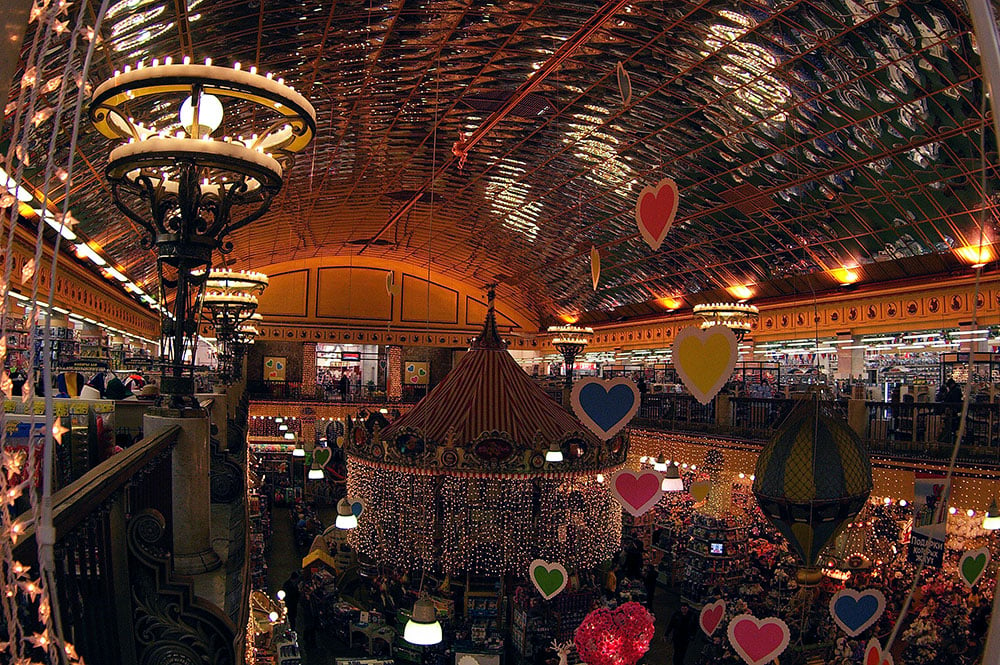
Detsky Mir is now a chain, and opened its Moscow flagship last August. By now, all of these are merely interesting buildings, with the notion that the provision of goods could be achieved without an attendant culture of consumption and profit long absent from anything but, at most, their iconography. However, the first major shopping complex after the re-installation of a particularly ruthless capitalism in 1991 was directly linked to the old showcase of non-consumerist luxury, the Moscow Metro. The Okhotny Ryad shopping mall, opened in 1997, can be reached from the underground passageways linking the Teatralnaya, Okhotny Ryad and Ploshchad Revolyutsii stations that converge under Red Square, in the very heart of power, and not far from GUM itself. But where the airiness, grandeur and lightness of touch of the latter had disappeared in this claustrophobic neoclassical underground space. It suggested that in future, any possible space could be cannibalised and transformed for selling in, a luxury analogue of the thousands selling their possessions on the streets and Metro tunnels.
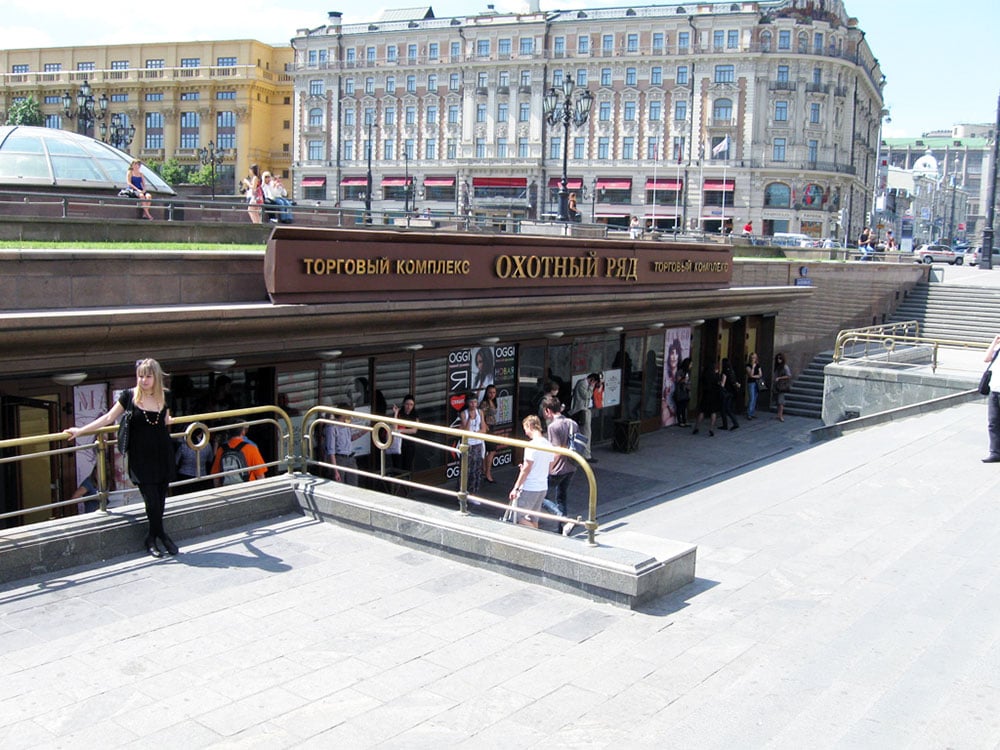
The banality of what followed is perhaps summed up in Aviapark itself. Aside from the unfortunate timing of its opening, there is nothing of note about the place, a vast series of boxes placed along the motorway on the north-western outskirts of Moscow. It is a reflection of just how much the city has become a normal capitalist metropolis, just like any other. Rather than the clear, magic-free world promised at Mosselprom or Mostorg or even the Stalinist child’s dream of Detsky Mir, you can get the same product in the same space you can get in London or New York — but, as sanctions bite and the currency collapses, at an ever higher and higher price.
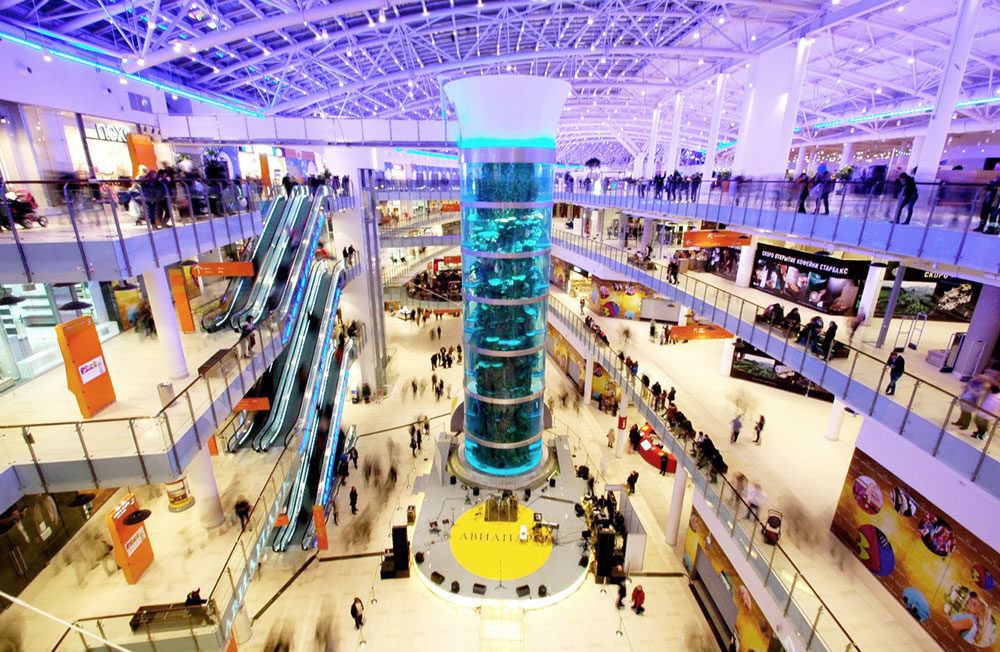
.jpg)

